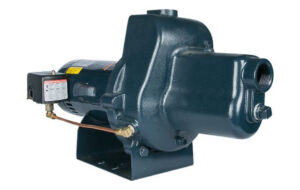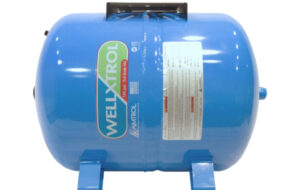When it comes to your well tank, low water pressure can cause some serious frustrations. If you need to draw water out of your well but are having trouble because the pressure isn’t strong enough, you may need to troubleshoot the system and make some changes before getting back on track. With these few simple steps, you’ll be able to figure out what’s going on and get your water pressure back to normal in no time. Still not sure? Call AW-Pump for fast, affordable, and efficient service.
If you’ve noticed a decrease in the pressure of your well water, there could be several causes. The most likely culprit is a problem with your well tank. Well tanks are essential to a well system, as they store the water and provide pressure to get it to your home. If your tank has started to malfunction, it can cause low water pressure and make it difficult to access the water you need. Fortunately, troubleshooting low water pressure in your well tank is relatively straightforward. This post will discuss the common causes of low water pressure and how to identify and repair them. With the right knowledge and tools, you’ll be able to get your water pressure back up and running in no time! A well tank is used to store water and provide pressure for your home
*If the well tank malfunctions, then it will result in decreased water pressure
*This decreases both the flow of water from your tap and makes it more difficult to fill a container
*The first step to fixing this issue is knowing what type of issue you have
*There are two types of issues that may affect well tanks; mechanical problems or physical obstructions
If you have a well tank, low water pressure can be an irritating and potentially hazardous problem. If you’re dealing with low water pressure in your well tank, it’s essential to determine the cause before attempting to fix it. Here are some common causes of low water pressure related to well water:
The pump is not producing enough pressure – This can occur due to faulty wiring, a bad switch, or an undersized pump. It may also be caused by a clogged suction line or an airlock in the plumbing.
The tank is too small – If your well tank is too small for your needs, it won’t be able to keep up with the water demand, resulting in low water pressure.
The pressure switch is not functioning correctly – A pressure switch that is not working correctly can prevent your pump from running at its maximum pressure setting, resulting in low water pressure.
Clogged pipes – Clogged pipes may decrease water pressure in older homes, as the lines become blocked with debris over time.
Once you’ve determined the cause of the low water pressure, you can take steps to fix the issue and restore normal flow. In many cases, simple adjustments can make all the difference regarding well water troubleshooting.
If you’re experiencing low water pressure in your home, it could be an issue with your well water tank. The well water tank is responsible for storing and pressuring the water supplied to your home from the well. An issue with the well water tank can cause the water pressure to become too low for everyday use.
To check your well water tank, start by turning off all of the fixtures in your home, including the main shut-off valve. Then, locate the well water tank and inspect it for any physical damage, corrosion, or debris. Make sure all of the pipes are connected correctly and securely. You should also ensure the tank drain valve is closed and not leaking.
Next, take a look at the pressure switch. This device is located in the well water tank responsible for controlling the water pressure. Ensure that the switch is firmly attached and not damaged. Then, check to ensure it is set to the correct pressure setting. Depending on the model, you may be able to adjust this setting as needed.
If these steps don’t fix the problem, you may need to call in a professional plumber or well technician to examine your well water tank. They will be able to pinpoint the source of the problem and make any necessary repairs or adjustments.
Are you experiencing low water pressure in your home? It might be a problem with your well tank. Low water pressure in a well tank is caused by several factors, so troubleshooting can take some time and require patience. Here are the most common causes of low water pressure in a well tank and what you can do to fix it:
First, check the distribution system. If the piping in your home is old or clogged, this could lead to low water pressure. To check for clogs, turn off your main water supply and look for any leaks or blockages. If there’s a blockage, cle
When it comes to your well tank, low water pressure can cause some serious frustrations. If you need to draw water out of your well but are having trouble because the pressure isn’t strong enough, you may need to troubleshoot the system and make some changes before getting back on track. With these few simple steps, you’ll be able to figure out what’s going on and get your water pressure back to normal in no time. Still not sure? Call AW-Pump for fast, affordable, and efficient service.
If you’ve noticed a decrease in the pressure of your well water, there could be several causes. The most likely culprit is a problem with your well tank. Well tanks are essential to a well system, as they store the water and provide pressure to get it to your home. If your tank has started to malfunction, it can cause low water pressure and make it difficult to access the water you need. Fortunately, troubleshooting low water pressure in your well tank is relatively straightforward. This post will discuss the common causes of low water pressure and how to identify and repair them. With the right knowledge and tools, you’ll be able to get your water pressure back up and running in no time!
*A well tank is used to store water and provide pressure for your home
*If the well tank malfunctions, then it will result in decreased water pressure
*This decreases both the flow of water from your tap and makes it more difficult to fill a container
*The first step to fixing this issue is knowing what type of issue you have
*There are two types of issues that may affect well tanks; mechanical problems or physical obstructions
If you have a well tank, low water pressure can be an irritating and potentially hazardous problem. If you’re dealing with low water pressure in your well tank, it’s essential to determine the cause before attempting to fix it. Here are some common causes of low water pressure related to well water:
The pump is not producing enough pressure – This can occur due to faulty wiring, a bad switch, or an undersized pump. It may also be caused by a clogged suction line or an airlock in the plumbing.
The tank is too small – If your well tank is too small for your needs, it won’t be able to keep up with the water demand, resulting in low water pressure.
The pressure switch is not functioning correctly – A pressure switch that is not working correctly can prevent your pump from running at its maximum pressure setting, resulting in low water pressure.
Clogged pipes – Clogged pipes may decrease water pressure in older homes, as the lines become blocked with debris over time.
Once you’ve determined the cause of the low water pressure, you can take steps to fix the issue and restore normal flow. In many cases, simple adjustments can make all the difference regarding well water troubleshooting.
If you’re having trouble with low water pressure in your well tank, check your well water pump. If it’s not running, it could be because of a power issue, a clogged filter, or an air leak in the system.
If the power to the pump is off, you’ll need to locate the main power switch and turn it back on. Ensure that any fuses or circuit breakers controlling power to the pump are in good working order and functioning correctly.
If the power is on, but the pump isn’t running, you may have a clogged filter or an air leak. Check the intake filter for blockages or buildup and replace or clean it as necessary. If there are no blockages, you may need to inspect the pump for air leaks. Look for any cracks or damaged fittings; if you find any, replace or seal them.
Finally, make sure that the pressure switch is adjusted correctly. You should also check to see if the pump cycles on and off too frequently. If so, ensure the pressure switch setting is correct for your particular system.
By checking your well water pump and ensuring everything is functioning correctly, you can help troubleshoot any low water pressure issues you may have. If you need help, it’s best to consult a professional who can look at your system and ensure everything is running as it should.
Are you experiencing low water pressure in your home? It might be a problem with your well tank. Low water pressure in a well tank is caused by several factors, so troubleshooting can take some time and require patience. Here are the most common causes of low water pressure in a well tank and what you can do to fix it:
First, check the distribution system. If the piping in your home is old or clogged, this could lead to low water pressure. To check for clogs, turn off your main water supply and look for any leaks or blockages. If there’s a blockage, clear it away with a plumbing snake. If there are any corroded pipes, replace them with new ones.
You should check the tank if the distribution system isn’t the issue. Low water pressure can be caused by an insufficiently pressurized tank or a tank that’s not large enough to meet your needs. To check the pressure level, use a pressure gauge and adjust it until it reads between 30-50 psi (pounds per square inch). If the pressure level is too low, consider installing a larger tank or investing in a booster pump to increase the flow rate.
We hope that this article has helped guide you on how to troubleshoot low water pressure in your well tank. Low water pressure can be a serious issue, so it’s important to address it promptly and effectively.
If none of the above solutions have solved your problem, you may need to contact a professional plumber to help diagnose the issue. A plumber will be able to inspect your well tank and determine what the underlying problem is, as well as make necessary repairs to restore the water pressure.
Overall, troubleshooting low water pressure in your well tank is an essential step to keeping your home’s water system functioning properly. By following the steps outlined in this article, you can quickly and easily identify the root cause and resolve any water pressure issues.






